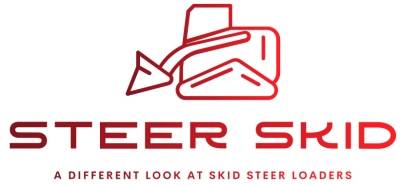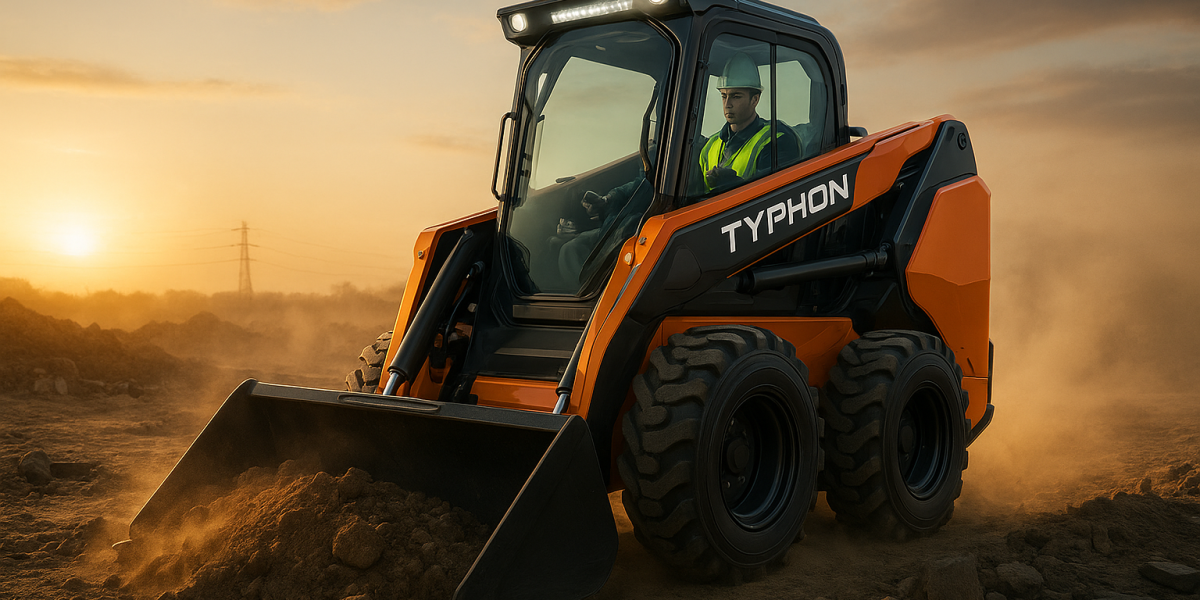Skid steer loaders are undergoing a major change of character. Formerly recognized as merely sturdy, mechanical, and hard workers, the Future of Skid Steers machines are increasingly smart, efficient, and environmentally friendly.
The Future of Skid Steers:
The future of skid steers as we gaze into 2026, unfolds an exciting new era of process automation powered by artificial intelligence, electrification, telematics, and job site connectivity.
Those involved in contracting work, as well as executives of vehicle fleets and businesses with spare vehicles, should be very ready with the fact that new technology will be coming which will improve productivity, lower the costs of operating the business, and further sustainability.
As we are near to 2026, what will make the skid steer technology the most talked about trend are only speculative shifts to a more extensive and different equipment landscape in 2026 and beyond and not simply the trend setting by themselves.
Top 8 Features to Look Forward in the Future of Skid Steers:
-
Electrification: Goodbye Diesel, Hello Batteries
Electric skid steer loaders are no longer a fantasy in the near future of skid steers —they’re rapidly becoming a practical alternative to traditional diesel-powered models.
Why Electric Skid Steers Are Gaining Traction:
- Zero Emissions: Great for indoor work, green construction, or meeting strict environmental standards.
- Lower Operating Costs: No fuel bills, and minor maintenance (no oil changes) because of less wear and tear on the machines.
- Quieter Operation: Less noise pollution is perfect for housing areas or night-time working places.
| Feature | Diesel Skid Steer | Electric Skid Steer |
| Fuel Emissions | High | Zero |
| Operating Cost (per hour) | $10–$15 | $2–$5 |
| Maintenance Frequency | High | Low |
| Noise Level (Decibels) | 85–100 dB | 65–75 dB |
The entire future of skid steers goes electric, and alongside that trend, the number of makers producing both battery-powered full-size and compact machines will increase so that by 2026, they will be available to users.

Future of Skid Steers Comparison
-
Autonomous & Semi-Autonomous Controls
To similar extent as in the case of cars, the transformation of skid steer loaders into the autonomous class is happening. Several manufacturers are piloting the remote control and semi-autonomous systems that make safety and smartness the main features of the operation.
Key Features to Expect from the Future of Skid Steers:
- Remote Operation via App or Joystick: Hazardous or inaccessible areas are where this
- Obstacle Detection & Safety Alerts: Real-time sensors do not only avert accidents but also prevent
- GPS-Eased Path Planning: Rerun such routes for repetitive grading or trenching.
Skilled labor will not be substituted by autonomous operation, rather, operator productivity and safety will be enhanced greatly under such conditions as fleet operations or difficult environments.
-
Telematics and Smart Diagnostics
Real-time data, in 2026, is expected to be the mainstay of the management of the machines. Skid steers that have been enabled by telematics will be a complete game-changer in how we supervise, service, and utilize the equipment.
Benefits of Telematics Integration:
- Predictive Maintenance: Avoid the occurrence of failure with your vehicle giving you a realtime alert on the wear, the fuel level, or even an error code.
- Fleet Tracking: Discover the locations of your units, what they have been used for, and how much it has cost you.
- Usage Analytics: Watch over idle time, fuel burn, and productivity to increase the efficiency of work.
| Data Collected | Benefits |
| Engine Hours | Optimize maintenance intervals |
| Fuel Consumption | Manage job site efficiency |
| Error Codes & Alerts | Address issues before failure |
| Geofencing & Location | Prevent theft and unauthorized use |
Innovative skid steer technology trends in telematics are essential for more intelligent fleet management and greater operational visibility.
-
Attachment Intelligence & Automation
Machines that use attachments will get the ability to do things by themselves. In 2026, (skid)steer attachments will not only operate—they will also converse with the base to upgrade the performance and save energy.
Upcoming Trends in Attachments:
- Attachment Recognition: The machine just identifies the attachment and sets the program accordingly by itself.
- Smart Calibration: Distribution of weight, flow rates, and sensitivity change without needing a manual intervention.
- Attachment Data Logging: Through the monitoring of usage, the product will give the info of wearing and replacement needs.
Just as if you were trenching, mulching, or snow blowing, intelligent attachments are the ones to help the machine of yours reach the peak of its potential.
-
Compact Innovation Meets Power Efficiency
Smaller machines will get manufacturers find more and more ways to fit power and precision in compact skid steer loaders without a change in weight or emissions. At the same time, the machines become Design Innovations to Watch:
- Vertical Lift Arms in Compact Frames: More lift height, less footprint.
- High-Flow Hydraulics in Smaller Chassis: Support for heavy-duty attachments without upsizing.
- Cabin Upgrades: Touchscreen displays, climate control, noise insulation.
The developments open a path to the future of skid steers with compact and agile models to be superior to bigger ones in urban or indoor environments.
-
Greener Manufacturing & Sustainability Trends
Greener technology in manufacturing is but the beginning. The OEMs are steering a wheel of the total SOVLE-b-term by virtue of environmentally-friendly measures in every part of the skid steer life cycle.
Eco-Innovations in Manufacturing:
- Recyclable Components: Mainly treated aluminum pieces, composite panels, and reusable filters have been used.
- Low VOC Paints & Fluids: They are safer not only for workers but also the environment because they combine very low volatile organic compounds and other ecofriendly features.
- Energy-Efficient Assembly Lines: The energy used in production etc. along with distribution and usage can be accounted for, thus the carbon footprint can be significantly reduced.
| Sustainability Focus | Benefit |
| Electric drivetrain | Zero tailpipe emissions |
| Bio-hydraulic fluids | Eco-safe and biodegradable |
| Recyclable frame materials | Reduced landfill contribution |
These tendencies harmonize well with the collaborating impulses of worldwide demand for green construction equipment.
-
Enhanced Operator Experience & Ergonomics
More and more operators’ machines are just not for how well they perform but for the comfort and health of the operator. Contented workers = more efficient work output.
Operator-Centric Enhancements:
- 360-Degree Visibility: More glass, less hiding of areas that can’t be seen.
- Joystick Controls & Digital Displays: Handling to the required level of accuracy, at the same time reducing the weariness of the operator.
- Seat Suspension Systems: Vibrations are greatly reduced, and postural support is provided.
Such as voice-controlled commands, machine health reports, and custom interface settings are just some of the changes that you will spot in the 2026 cab.
-
OEM Competition & Smart Integrations
What it will be like in 2026 is the competition between the top brands will be smarter and more analytical with the use of smart integration and connected ecosystems.
Industry-Wide Shifts:
- API Platforms for Integration: Fleet management tools, CRMs, or job costing software now can be synced with your skid steer data.
- OTA (Over-the-Air) Updates: Performance or safety software updates can be installed into machines without the need for a shop visit.
- Cross-Brand Compatibility: Changes in the nature of attachments and components with regard to their functionality are the main reason that they can be the new standards allowing the equipment to be interoperable.
One of the main features that will lead the way in future of skid steers equipment purchases is the emergence of smart construction ecosystems.
Conclusion: A New Era for Skid Steers Is Here
It is said that the future of skid steers has very lovely aspects such as being bright, electric, intelligent, and connected. These changes such as free operation and skid steer technology like telematics, however, will change the entire world of working with these machines as they are to be made in 2026.
If you are a contractor, fleet operator, rental house, or dealer, then knowing about these innovations and future of skid steers beforehand will keep you a step ahead of your competition. Along with the development of the market, the skid steers will be judged not only by the power of their engines but also by their intelligence, efficiency, and adaptability.
FAQs: Future of Skid Steers Trends in 2026
Are electric skid steers powerful enough for heavy-duty jobs?
Exactly. The modern electric units from Typhon Machinery, Bobcat, CAT, and the like are closing the performance gap with the diesel versions, especially in such use cases as urban and indoor works.
How is the autonomous operation of skid steers done?
The machine is able to follow predetermined tracks or be controlled from a distance by using GPS, sensors, and onboard artificial intelligence, hence better safety and less operator fatigue.
What is telematics and why is it important?
Telematics is a system that remotely records machine health, utilization, and location. It makes the process of maintenance, job costing, and theft prevention easier.
Will older attachments work with new skid steers?
While the majority of them will, newer machines with smart recognition features may still require updated attachments to be fully functional.
Is it possible to put smart features on my skid steer by retrofitting the existing one?
Some of the features like telematics or remote tracking can be enabled through the addition of equipment. Still, those like smart hydraulics and electric powertrains commonly go with newer models.
Are small skid steers still acceptable for large-scale works?
Yes, many compact models nowadays have high-flow hydraulics and vertical lifts that have made them useful in big projects with a restricted area of space.

